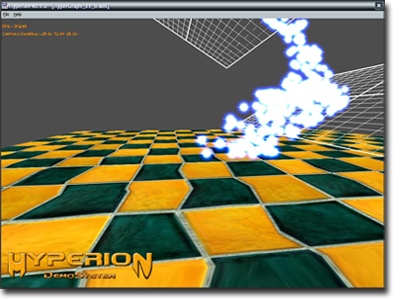What is a graphic driver and what is it good for ?It is a software that allows the operating system (Windows, Linux...) to interact with the graphics card or more precisely
to operate hardware accelerated functions. Those functions are accessed through programming interfaces (API) such as
OpenGL or
Direct3D.
Graphic drivers should be installed so
OpenGL or
Direct3D can operate those accelerated 3D rendering functions. Most demos and applications on oZone3D's
website need installation of the latest drivers.
Each card owns a standard and minimal set of instructions, that any operating system older than the card knows how to make use of them.
However installation of the latest manufacturer's drivers is still advised. Indeed they allow the OS to operate specific function of a graphic card, they also fix software and more rarely hardware bugs.
Here you can see how important it is to often update your drivers, with the well-known
point-sprite bug on ATI's:
When enabling point sprite mode in particle systems ,Radeon cards deform texture coordinates. This well known graphic issue in ATI's drivers and have been fixed since Catalyst 5.1:

Same rendering with Catalyst 5.1 and upper:

Here is a link to a topic on it:
http://www.flipcode.com/cgi-bin/fcmsg.cgi?thread_show=10620There several types of drivers:
- Generic ones provided by the OS.
- The official provided by the manufacturers, sometime they receive a certification for a specific OS (WHQL : Windows Hardware Quality Laboratories).
- Beta drivers which will become the next official if they succeed in the beta testing period.
- Customized drivers provided be different motivated teams, they display functionalities that are hidden in official one.
No drivers are compatible with another chipset than the one it has been designed for, here is a list of some of the main
manufacturers:
- ATI: Catalyst
- nVidia: Forceware
- Matrox Parhelia
- XGI: Reactor
Download links to the latest drivers of the main manufacturers can be found in the left menu of this website.
The naming convention wants that a drivers name is followed by its version number: Catalyst 5.6 (Driver Version 6.14.10.6542) or
Forceware 77.30.
To know which version is installed on your system you can use
HardwareInfos which is a useful tool to have quick infos on one's system.
Usually drivers contains 2 parts and recently 3:
- The graphics driver.
- The software that allows the user to tweak the graphics card (Control Center: ATI, nView Desktop Manager: nVidia).
- The compiler for pixels and vertex shader.
Pixels and vertex shader allows graphic programmers to customize the rendering of a scene avoiding the usage of the standard hardware implemented algorithms,
that provide « standard » rendering. This is possible by sending to the compiler contained in the drivers GLSL or HLSL code, it is here that a good driver makes the difference : in a previous version
of its driver a GeForce 6800 needed 9 cycles instead of 3 to 5 with the latest to do a branching instruction (if).
We hope that you enjoyed reading this explanation on drivers and that it has convinced you in the usefulness of having up to date drivers.
Graphics Chipset List
Graphics Drivers Download